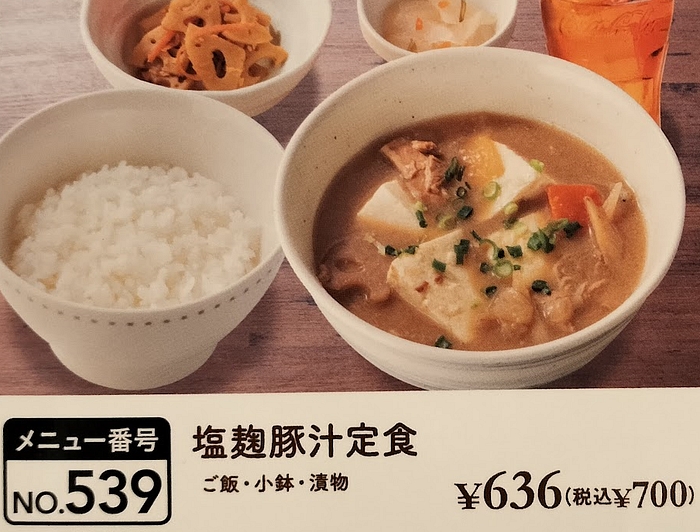Do you know how to count fish in Japanese? Or what do you call that thing you drink from? Or what to call rice on a plate versus rice in a bowl?
The answers are not as simple as you might think.
I have been living in Japan for 7 years and studying Japanese even longer. What still surprises me about the Japanese language is how it divides the world differently from English. In English, there is only one word when Japanese has two. The result is that Japanese points out interesting differences in the world that you might miss when speaking English.
Here are a few examples of distinctions that Japanese makes that English does not.
ライス (Raisu) vs. ご飯 (Gohan)


In the U.S., if you point to a bowl of rice and ask me what it is, I say "rice." If you point to a bag of rice on the store shelf, I also say "rice." But not in Japanese.
In Japanese, rice is a very important part of life and thus they have more than one word for the little grain that we eat.
Japanese has 3 main ways to refer to rice:
1. 稲 (Ine) — Rice in the husk or still growing in the field
2. 米 (Kome) — Threshed uncooked rice usually white [玄米 (Genmai) is often used to distinguish brown rice]
3. ご飯 (Gohan) — Cooked white rice
Japanese do not confuse these or use them interchangeably. Many times I have said gohan when talking about what we need to buy at the store and my Japanese wife has been angry that I would spend so much money on something that we can make at home.
However, the biggest thing that confused me when first arriving in Japan was why some menus said ライス (raisu) and others ご飯 (gohan).
Gohan is cooked white rice just like raisu, but not just any cooked white rice. It is often used to refer to Japanese rice which is a type of short-grained rice served without the germ layers and served in a bowl separate from other foods. All other forms of rice are not usually called gohan.
So if it's on a plate — ライス
If it is long grain — ライス
If it is part of a non-Japanese dish like Paella….you guessed it — ライス
ハンバーグ (Hambagu) vs. ハンバーガー (Hambaga)
The other thing on the menu that confused me was the difference between hambagu and hambaga.
ハンバーグ (Hambagu) is what is often called a hamburger steak. It is served on a plate with vegetables and bread on the side and eaten with a knife and fork.
ハンバーガー (Hambaga) on the other hand, is what most Americans have been thinking about since I first mentioned the word. A patty on a bun with vegetables and sauce that is eaten with your hands and made world famous by McDonald's.
This difference is particularly difficult if your pronunciation is not great and you don't make this a clear distinction when speaking. I am ashamed to say that it took me a few weeks to understand that it was actually two different words and not just a mispronunciation or particularly bad katakana translation of the word hamburger.
ガラス (garasu) vs グラス (gurasu)
Another set of words with a small difference is ガラス (garasu) and グラス (gurasu). Simply put, garasu is the material that is used to make things like windows, plates, and screens; while gurasu is the thing we use to drink various liquids.
Examples of ガラス
ガラスの皿 (glass plate)
ガラス戸 (glass door)
ガラス (window glass)
Examples of グラス
タンブラーグラス (tumbler glass)
ワイングラス (wine glass)
カクテルグラス (cocktail glass)
It gets more complicated when glass is part of a compound name in English and it might not be intuitive to a non-native speaker of Japanese which one to use.
For example:
サングラス (sunglasses)
オペラグラス (opera glasses)
ステンドグラス (stained glass)
アワーグラス (hourglass)
ガラスの動物園 (Title in Japanese of The Glass Menagerie a play by Tennessee Williams)
ガラスの天井 (Glass ceiling — both in the literal sense and the figurative sense)
ガラス細工 (Glasswork)
6 Ways to Count A Fish….
Now we turn to something that every learner struggles with when learning Japanese; counter words or counters (助数詞 josūshi).
In English counting or talking about the number of fish is easy. It is the same no matter where the fish is.
Person A: How many fish do you see?
Person B: 5
Now for Japanese. How many fish are there? Well, it depends on the state or location of the fish.
Swimming in the ocean: 一匹 (いっぴき, Ippiki)
Caught on the line: 一本 (いっぽん, Ippon)
Prepared in the market : 一丁(いっちょう, Icchō)
Cut into filets or smaller pieces: 一頃 (ひところ, Hitokoro)
As sashimi or thinly sliced: 一冊 (ひとさく, Hitosaku)
Eating it: 一切れ (ひときれ, Hitokire)
So, if I see a fish swimming in the ocean, I would say:
魚一匹いる (Sakana ippiki iru — there is one fish).
But if I am in the market and want a fish I would say:
魚一丁ください (Sakana icchō kudasai — one fish please).
To make things more complicated, even different sealife is not even counted the same way! Overall there are around 500 counter nouns Japanese with around 350 being considered "common" (i.e. should be known by a fluent speaker). So don't worry. No matter what you are counting there will probably be a special way to count it.
What do you think? Do you like the way Japanese draws distinctions between things with different words? Does your language make the same distinctions as Japanese? Or maybe it has its own unique way of making distinctions?
Thank you for reading. If you enjoyed it and would like to support me, there are several ways, all of which I would greatly appreciate.
- Engage with this article by clapping, commenting, and highlighting it.
- Subscribe to not miss anything
- Check out more of my work on my website
- Buy me a coffee so I can keep writing

